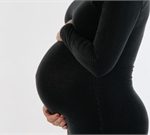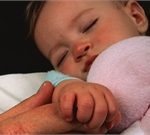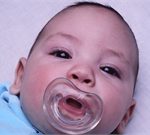Constipation in Children
Constipation can be a huge concern for children and their parents. And once it begins it becomes a difficult cycle to break. So, although at first parents may not take it seriously, you will, unfortunately, soon realize that constipation does require your attention and intervention.
What is Normal?
The average child will have a soft bowel movement anywhere from three times a day to once a week.
What is Constipation?
Constipation is the passage of hard stools. If your child has a bowel movement every day and it is in the form of hard dry balls, s/he is constipated. Though some would say not having a bowel movement for more than three days is also constipation, in our office our experience has been that unless your child is uncomfortable, even if your child goes to the bathroom once a week, so long as it is soft, it is not constipation.
Causes of Constipation
Medications:
There are some medications that can cause constipation so if your child is on medication and is constipated be sure to discuss this with your child’s Pediatrician or the doctor who prescribed the medication.
Exercise:
Children who are physically active have healthier bodies and are less likely to be constipated. So keep your children moving.
Diet:
In children under 18 months of age the most common cause of constipation is dietary.
Foods that constipate are: Bananas, Rice, Apples (without the peel), Breads, and Dairy. Decreasing these foods and increasing high fiber foods and water will help prevent/resolve constipation. For many children simply cutting back on milk, or changing to rice/almond/soy milk solves the constipation issue.
Foods that facilitate the passage of soft bowel movements are: blueberries, pears, prunes, apricots, peaches, mangos, plums, kale, peas, sweet potatoes, corn, bran cereal, black beans, kidney beans, red lentils-cooked, and avocado. With very young children who are not yet eating solids you may need to add a few ounces of prune juice, pear juice, or white grape juice to their daily intake. This is the one time I recommend giving a child juice, because we are using the juice as a type of medicine. In all other instances juice is simply sugar calories and should be treated as a dessert food and given sparingly.
Keep in mind that children are different from one another so you may have two children with identical diets, yet one is constipated and the other is not.
Withholding:
In children over 18 months of age the most common cause of constipation is withholding, where a child voluntarily chooses not to let the bowel movement out for any reason. Some children are out playing and having fun so they do not want to stop to use the bathroom. Some are fearful of the potty (during potty training – a good reason to avoid pushing children to use the toilet before they feel ready). Some children do not feel comfortable using public bathrooms, or as they get older, the school bathrooms, so s/he hold it in until they get home. If a child has been abused s/he is more likely to be fearful of using the toilet and is therefore more prone to constipation.
Whether or not withholding is the initial cause of constipation it does become the cause of the cycle of constipation in all constipated children. What happens after a child has had a hard stool, for any reason, is that s/he becomes fearful of the bowel movements hurting, so they tend to hold it in. So the cycle begins –
- It hurts to poop so children hold it in,
- The body pulls water out of the stool while it sits in the colon (the last part of the intestines),
- The stool becomes harder and harder,
- Eventually the child has a very hard and painful bowel movement,
- Their fear increases so that the next time they feel the urge to have a bowel movement they withhold the stool. (and return to #1…)
Medical:
There are medical conditions more likely to cause constipation. If your child suffers from chronic constipation you should contact your Pediatrician to discuss if there is a need to test for other causes. However, less than 10% of constipation is caused by an underlying medical condition.
Signs and Symptoms of Constipation
- Hard dry stool
- Painful passage of stool
- Repeated urinary tract infections (stool in the colon can block the urine from flowing well)
- Abdominal pain, lack of appetite, nausea
- Small frequent passage of diarrhea/wet farts. If there is a blockage – a hard ball of stool- in the colon, new soft/liquid-y stool that is forming may leak around the blocked area. The body becomes less sensitive and aware (from being constantly stretched out) and that leaking stool simply comes out without the anus contracting to hold it in. If you notice traces of stool in your child’s underwear this can be a sign of constipation.
- Irritability – It feels miserable to be constipated and children act out how they feel, so a cranky child might be another sign of constipation.
Treatment
- The first line of treatment is prevention. Look through the causes above and make the changes necessary to prevent further constipation.
- Remove any blockage/backlog of stool
- Your pediatrician may recommend that you use a laxative/stimulant to promote passage of the stool and clear out your child’s colon. Miralax is the most popular one currently in use, and the dosage varies. The amount needed is simply the amount it takes to have soft stools. Some days require more, some days less. Do not use it with a child less than 2 years of age before discussing it with your Pediatrician. See the guide below regarding where to start:
Miralax Solution
Mix one capful (17 grams) of MiraLax powder in 8 ounces (8 ounces = 240 ml. = 1 cup) of a clear beverage (water, Kool-Aid, juice, etc). Dissolve completely. Keep the mixed solution in your fridge – it will stay good for a week pre-mixed. You can alter the dose as needed to reach your goal of: 1 soft bowel movement per day.1 ounce of MiraLax™ Solution = 2 Tablespoons.
Child’s Weight Amount of Miralax Solution 10 kg (22 lbs) 4 oz per day 20 kg (44 lbs) 8 oz per day 30 kg (66 lbs) 10 oz per day 40 kg (88 lbs) 14 oz per day 50 kg (110lbs) or greater 16 oz per day
- Your pediatrician may recommend that you use a laxative/stimulant to promote passage of the stool and clear out your child’s colon. Miralax is the most popular one currently in use, and the dosage varies. The amount needed is simply the amount it takes to have soft stools. Some days require more, some days less. Do not use it with a child less than 2 years of age before discussing it with your Pediatrician. See the guide below regarding where to start:
- If your child is comfortable with a suppository you might try using a pediatric glycerin suppository, coated in Vaseline, to help him/her pass the blocked stool. These are sold in most pharmacies.
- Avoiding painful stools – put a liberal amount of Vaseline on your child’s anus at every diaper change, or before s/he sits on the toilet, so that the anus is lubricated and will stretch more easily when stool is passed. Large, hard stools often cause tears around the anus so lubricating to avoid further tearing/to prevent tearing and minimize pain is important.
- Regular toilet sitting. If fear of the toilet is not your child’s cause for withholding stool then you should have your child sit on the toilet for 5-10 minutes approximately 20-30 minutes after each meal to take advantage of the body’s natural reaction to eating – the colon contracts and stool is more easily passed. It helps if your child has his/her feet on the floor or on a stepstool when sitting on the toilet. Do this every day, weekend, vacations, no exceptions. We are trying to re-train the body to prevent recurrence of the constipation. And remember to use positive reinforcement to reward regular sitting.
- Mineral Oil: Easy and non-medicinal, so a great option. Fill a covered cup or container with a juice (pear/prune if possible) and mineral oil. Shake vigorously before giving to your child so the oil and juice are mixed. Drinking 2-6 ounces of this juice/oil mixture each day will help your child pass his/her stool more easily. There can be leakage of oil so mineral oil is best tolerated by toddlers who are wearing pull-ups/diapers. If you have an older child open to giving this a try you might use a pantiliner in the underwear to catch any possible leakage without discomfort.
Maintenance
Children need to be free from constipation and pain with stooling for a period of time before their bodies will totally relax and resume a normal pattern. Infants and children under 18 months of age often get there sooner –in as little as 2-4 weeks. Toddlers can take 3-6 months, and older children can take 6-12 months before their constipation can really be considered ‘cured’.
It is important to stay conscious of dietary prevention, exercise and maintenance of regular toilet sitting as described above. If your child relapses then the ‘recovery’ clock will have to be reset again.
Once the constipation and blockage have been resolved many children also require 3-12 months of daily laxative/stimulant use (MiraLax) and/or mineral oil use, combined with regular sitting and positive reinforcement to prevent recurrence of constipation.
Call your Pediatrician if your child has:
- Chronic longstanding constipation
- Bloody diarrhea
- Abdominal pain – severe- with or without fever
- Continued constipation despite 1 week of above treatments.
And always put a call in to your Pediatrician if you feel that something is just not right – remember no one knows your child like you do!
-Monique Araya, MD, FAAP
The medical information on this Web site is provided for educational purposes only. The information provided in this site, or through linkages to other sites, is not a substitute for medical or professional care, and you should not use the information in place of a visit, call consultation or the advice of your physician or other healthcare provider.
If you believe you have a medical emergency you should call 911 or your physician immediately. If you have any questions regarding your health or a medical condition, you should promptly consult your physician.
- Accidental Poisoning
- Bites and Stings
- Burns (and sunburns)
- Childhood Asthma
- Colic and Crying Babies
- Constipation in Children
- Cough & Cold
- Diaper Rash
- Diarrhea
- Ear Pain
- Fever
- Head Trauma and Head Injuries
- Kids and Allergies
- Lice
- Medication Dosages
- Nosebleeds in Children
- Pink Eye and Styes
- Rash
- Scrapes, Cuts and Stitches
- Sudden/Acute Abdominal Pain
- Treating a Common Cold Cough
- Vomiting and Nausea
 High Viral Loads Make Kids ‘Silent Spreaders’ of COVID-19
High Viral Loads Make Kids ‘Silent Spreaders’ of COVID-19 Clotting Tied to COVID-19 May Harm the Placenta
Clotting Tied to COVID-19 May Harm the Placenta ‘Kangaroo Care’ Has Big Health Benefits For Preemies
‘Kangaroo Care’ Has Big Health Benefits For Preemies Babies Are Spared Severe COVID-19 Symptoms
Babies Are Spared Severe COVID-19 Symptoms Sleepless Babies May Face Emotional Troubles as Kids
Sleepless Babies May Face Emotional Troubles as Kids